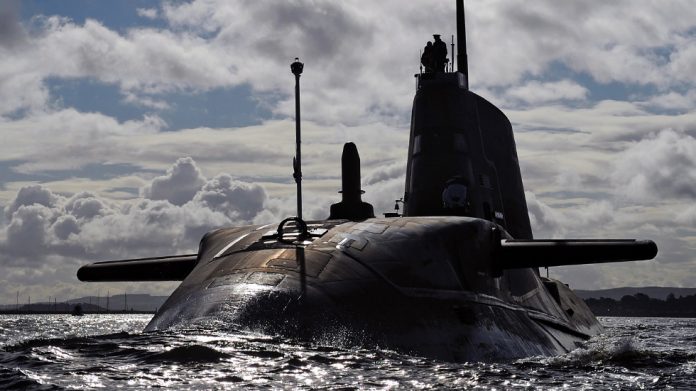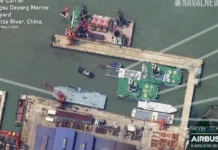
Britain’s new nuclear submarines will be operational from the late 2030s, replacing the current Astute Class, according to the British Government, UK Defence Journal reports. James Cartlidge MP, Minister of State at the Ministry of Defence, stated: “The Royal Navy’s submersible ship nuclear AUKUS submarines will be operational from the late 2030s, replacing the current Astute Class.”
AUKUS, as a defence and security partnership, was launched in September 2021. This tri-nation agreement displays the collective aim of Australia, the UK, and the US to uphold peace and stability in the Indo-Pacific region.
The cornerstone of the AUKUS agreement is the provision for Australia to procure its first-ever conventionally armed, nuclear-powered submarine fleet.
While Australia has operated submarines before, transitioning to a nuclear-powered fleet marks a significant advance, and this is where the SSN-AUKUS, also referred to as the SSN-A in the UK, comes into play.
This submarine design is set to be a next-generation wonder, drawing heavily from the UK’s forthcoming submarine designs and further bolstered by technology contributions from all three member nations. Notably, the integration of advanced US submarine technologies, which have long been leaders in undersea warfare, is a key feature.
While specific details are classified, certain overarching capabilities of the SSN-AUKUS are evident:
- Design: It will be based on the UK’s next-generation submarine design, integrating cutting-edge technological contributions from the US and Australia.
- Weapons & Surveillance: The SSN-AUKUS will feature a standard vertical launch system, paired with advanced weapon systems. Its intelligence, surveillance, and reconnaissance capabilities will be unparalleled, integrating both human-operated and AI-enhanced systems.
- Interoperability: A chief objective of this initiative is flawless interoperability amongst the naval assets of the three nations. The design, enriched with elements from all three nations, will facilitate streamlined joint naval operations.
- Propulsion and Range: Utilising nuclear propulsion technologies, the submarine will possess extended operational ranges and lengthier durations submerged, outstripping conventional diesel-electric submarines.
The UK anticipates the first submarines of this class to be operational by the late 2030s, with Australia following suit in the early 2040s. However, in the meantime, Australia will not be left without advanced submarine capabilities. The US, subject to Congressional approval, has pledged to supply Australia with three Virginia-class SSNs, potentially followed by two more.
In line with the current Astute and Dreadnought programmes, the UK’s SSN-AUKUS submarines will be constructed by BAE Systems at Barrow-in-Furness, with the nuclear propulsion components fabricated at Rolls Royce in Derby. As highlighted above, Rolls Royce will also be responsible for producing all the nuclear reactors for Australia’s submarines.
The programme is forecasted to generate thousands of jobs in the UK. Given the anticipated logistical challenges arising from the concurrent construction of the Dreadnought and SSN-AUKUS, as well as the additional capacity necessitated by the US Virginia class SSN programme, specific opportunities will be earmarked for the Australian industry to engage in the SSN-AUKUS supply chain.
By doing this, it will “alleviate stress on the supply chains of the UK and the US, tap into the existing strengths of Australian suppliers, and bolster their capacity in the run-up to the onset of Australia’s build programme”.
These opportunities are likely to concentrate on essential components where Australia has showcased industrial proficiency, such as pressure hull steel, valves, pumps, batteries, switchboards, lighting, and additive manufacturing. Interestingly, no UK suppliers are currently equipped to provide the specialised steel necessary for the fabrication of submarine pressure hulls. The specialised steel required for the Dreadnought SSBN, for instance, is currently sourced from a French supplier.



